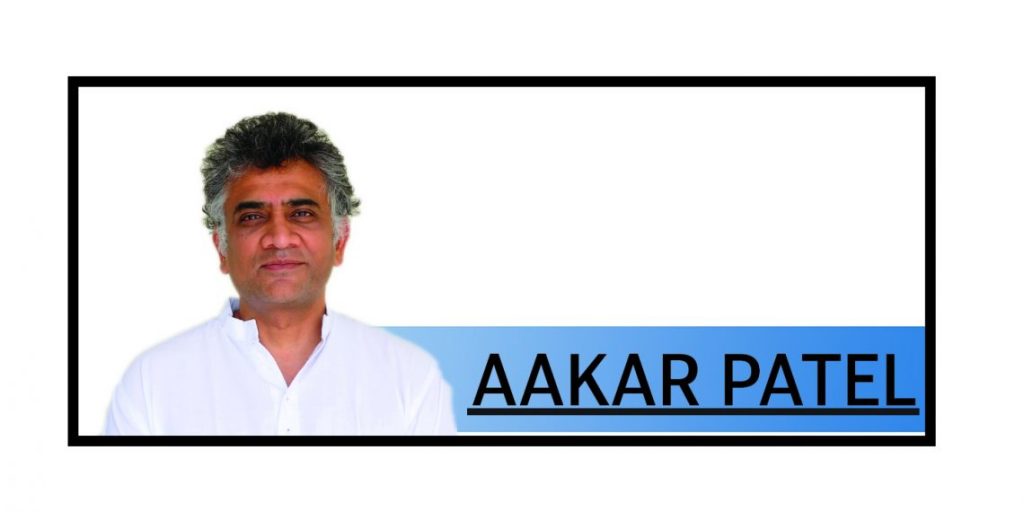Four years ago, when the Kashmir move was made (what a different time that was: before CAA, before the farmers protest), the columnist Pratap Bhanu Mehta wrote: “The BJP thinks it is going to Indianise Kashmir. But, instead, what we will see is potentially the Kashmirisation of India: The story of Indian democracy written in blood and betrayal.”
The Indianisation of Kashmir happened in the regular way, through the eviction of locals. I wrote a book two years ago in which this is what was revealed about who was running Kashmir’s higher bureaucracy under the local chief Manoj Sinha.
Home and revenue: Shaleen Kabra; finance: Arun Kumar Mehta; general administration and industries and commerce: Manoj Kumar Dwivedi; law, justice and parliamentary affairs: Achal Sethi; agriculture and cooperatives: Navin Kumar Choudhary; transport: Hirdesh Kumar; public works: Shailender Kumar; estates: M. Raju; science and technology and social welfare: Bipul Pathak; information and public relations: Rohit Kansal; labour and employment: Saurabh Bhagat; housing and urban development: Dheeraj Gupta; food, civil supplies, consumer affairs, information technology: Simrandeep Singh; hospitality and protocol: Indu Kanwal Chib; education: Bishwajit Kumar Singh; forests, environment and ecology: Sarita Chauhan.
The Kashmiris had been given tribal affairs: Rehana Batul; floriculture, gardens and parks: Sheikh Fayaz Ahmad; health and medical education: Atal Years Dulloo; stationery and supplies: Abdul Majid Bhat; rural development: Qazi Sarwar; civil aviation: Rukhsana Ghani; culture: Sarmad Hafeez; fisheries: Bashir Ahmad Bhat and horticulture: Ajaz Ahmad Bhat.
For this column, I went back to the same website and found the same thing four years after 2019. The names were Arun Kumar Mehta, Achal Sethi, Santosh Vaidya, Rajiv Rai Bhatnagar, Piyush Singla and so on. You get the picture.
Of course, this takeover by outsiders was not commented on or reported or even noticed except by a very few in the media. When a Kashmiri man, part of a civil society delegation in 2021, said he had no expectations from non-local officers, he was jailed on the orders of the Krittika Jyotsna, deputy commissioner of Ganderbal, who was angered by the comment. When I had checked in July 2021, the link to the election department — ceojammukashmir.nic.in — was not only a dud but the browser produced the warning: “This website may be impersonating ceojammukashmir.nic.in to steal your personal or financial information. You should go back to the previous page.”
Today, in August 2023, the website still does not open and nor does the one for Kashmir’s home department, https://www.jkhome.nic.in, which produces the error “this connection is not private.” More signs of good governance are available for reporters who take the trouble to examine what is going on there.
Meanwhile, the Kashmirisation of India happened also as Mehta had predicted. Part of it is malice but part of it was simply that Kashmir showed the way. Democracy is messy and governance is hard even if there is the will for it, which there often isn’t. Good governance requires following the rules and applying rule of law, and this is not easy to do even for the most competent of governments, which this one is not. What is substituted instead of governance is then the removal of democracy as was done in Kashmir.
Take Manipur or Gurgaon or Uttar Pradesh. Prosecuting cases is difficult because there are more acquittals than convictions. It is easier to then punish people outside the justice system. That is why bulldozers are now preferred to courtrooms. In Uttar Pradesh, the accused is often kneecapped, meaning shot through the leg, and this is shown as a form of justice. Accused are shot dead in custody including those who moved the Supreme Court for protection. This is rule of law in New India, but Kashmiris have long been used to this.
The mother of democracy leads the world in internet shutdowns and has led in this field for each of the last six years, going from only six in 2014 to regularly over 100. Giving citizens access to what the Supreme Court has called ‘a fundamental right’ is a nuisance. Often the laziness and complicity of the State is revealed by a video that the government did not want you, or the courts, to see. The internet ban solves the problem. Kashmir showed us the way and if Manipuris and Haryanvis are discovering it now it is because there was a model.
Internet in Kashmir was blocked for 17 months after the 370 move (Kashmiri children were from the only part of the world to be banned from online education during COVID). But this was fine for the rest of us because it concerned them. Elsewhere, banning your opponent from Parliament is seen as the most efficient way to eradicate democratic opposition. And then avoiding debate in the Lok Sabha is easier than following democratic process. Imagine the British Prime Minister, our beloved Rishi, being able to duck Question Time, about anything, leave alone total mayhem in a state of the Union. It is impossible to conceive of such a thing happening there but it is so casually accepted here as to become the norm. Why should Prime Ministers be accountable to Parliament for their job?
The beauty of the enterprise is that it has come upon us so quickly and yet it is not noticed. We carry along like nothing has changed and nothing has happened. New India comes with no definition about why it is new but it comes with a set of instructions for use which the State has given itself that Kashmiris witnessed first.
